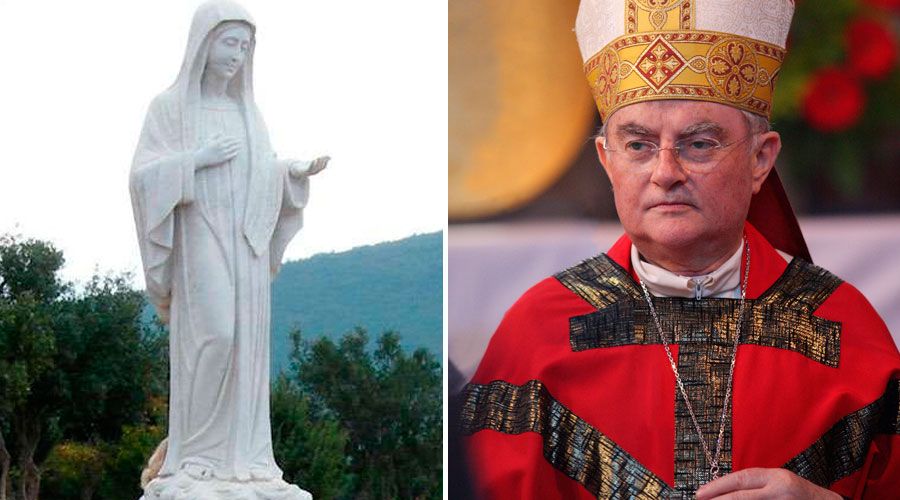
[ad_1]
Bishop Henryk Hoser, special envoy of the Pope for the parish and sanctuary of Medjugorje (Bosnia and Herzegovina), died last Tuesday August 10 in Warsaw (Poland), although the Episcopal Conference of the plaque did not release the news until Friday. August 13. .
The Polish Archbishop died aged 78 after falling ill with COVID 19. The prelate also suffered from malaria and although his condition was severe he hoped to recover and return to the shrine in Medjugorje after his recovery .
However, with his condition suddenly deteriorating, he had to be admitted again to the hospital in the Polish capital last Tuesday, where he died a few hours later.
Bishop Hoser received from Pope Francis in February 2017 the order of Special Envoy of the Holy See in the parish of Medjugorje.
In May 2018, the Pontiff formalized his mission by granting him the commission of Apostolic Visitor of a special nature for the parish of Medjugorje for an indefinite period and at the desire of the Holy See, that is to say at the initiative of the Holy See.
Bishop Hoser’s mission entrusted by the Holy Father had a pastoral character, without any reference to the Marian apparitions of Medjugorje, a doctrinal matter which fell within the competence of the Congregation for the Doctrine of the Faith.
According to the biography published in Vatican News, Bishop Hoser was born in Warsaw on November 27, 1942. He studied medicine and in 1969 entered the Society of the Catholic Apostolate (Pallottines).
He was ordained a priest in 1974 and left as a missionary in Rwanda, where he remained until 1995. He was president of the Association of Associated Medical Centers of Kigali (Rwanda), where he founded a Medical Center. Social, responsible for an epidemiological investigation. monitoring AIDS and a psycho-medical and social assistance program for patients.
In 1994, he was appointed expert in the field of family and development at the Special Synod for Africa. That year he was appointed Apostolic Visitor to Rwanda.
He was secretary of the Episcopal Commission for Holiness and, later, of the Episcopal Commission for the family.
Between 1996 and 2003, he was regional superior of the Pallottines and a member of the Missionary Council of the Conference of Major Superiors in France. In 2004, he was appointed rector of the Pallottine Missionary Procure in Brussels and joined the pastoral ministry within the European Union.
In 2005, Saint John Paul II appointed him Deputy Secretary of the Congregation for the Evangelization of Peoples and President of the Pontifical Missionary Works with the dignity of Archbishop.
In 2008, Pope Benedict XVI appointed him Archbishop-Bishop of the Diocese of Warsaw-Prague, in the Archdiocese of Warsaw, Poland.
In 2017, Pope Francis sent him to Medjugorje as special envoy of the Holy See and in 2018 he appointed him Apostolic Visitor of a special character for an indefinite period.
Marian apparitions
The so-called Marian apparitions in Medjugorje began on June 24, 1981. Six children from this small town in Bosnia-Herzegovina, then under the communist regime of the former Yugoslavia, claimed to have seen the Virgin Mary.
According to her testimony, Our Lady transmitted a message of peace to the world, a call to conversion, to prayer and to fasting, as well as a series of secrets about future events.
Since their inception, the so-called Medjugorje apparitions have been a source of controversy but also of sincere devotion and conversion.
The Holy See concluded in January 2014 a nearly four-year investigation into the doctrinal and disciplinary aspects of the alleged apparitions, and presented a document to the Congregation for the Doctrine of the Faith.
The Congregation is still studying the document and, once the process is complete, it will send a report to the Pope so that he can make the final decision.
In May 2017, Pope Francis himself, on the flight back to Rome after visiting the Shrine of Fatima, revealed that the document under review makes a distinction between the first Marian apparitions in Medjugorje and those that followed. .
Concerning the “current alleged apparitions”, underlined the Holy Father, “the report has its doubts”.
Pastoral commission
Regarding the mission carried out in Medjugorje in those years by Bishop Henryk Hoser, the Holy See underlined in a press release in 2017, after his appointment as Apostolic Visitor, that “it is an exclusively pastoral task” .
Its mission “aims to ensure a stable and continuous accompaniment of the parish community of Medjugorje and of the faithful who come on pilgrimage and whose requests require special attention”.
In 2019, the Holy See authorized priests and bishops to organize pilgrimages to the shrine of Medjugorje as long as they do not involve recognition of the apparitions.
.
[ad_2]
Source link
 Naaju Breaking News, Live Updates, Latest Headlines, Viral News, Top Stories, Trending Topics, Videos
Naaju Breaking News, Live Updates, Latest Headlines, Viral News, Top Stories, Trending Topics, Videos